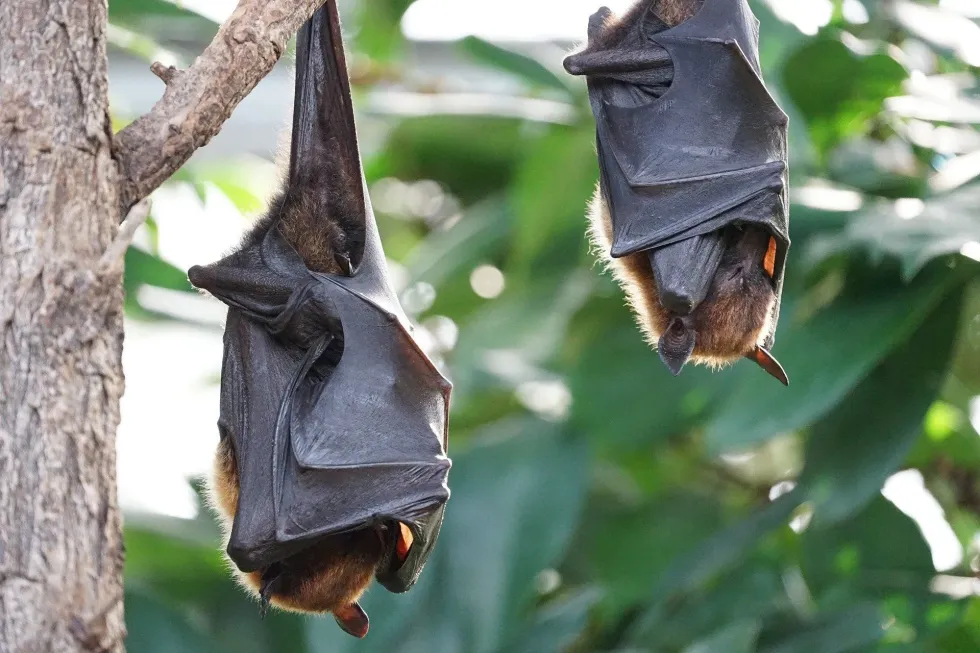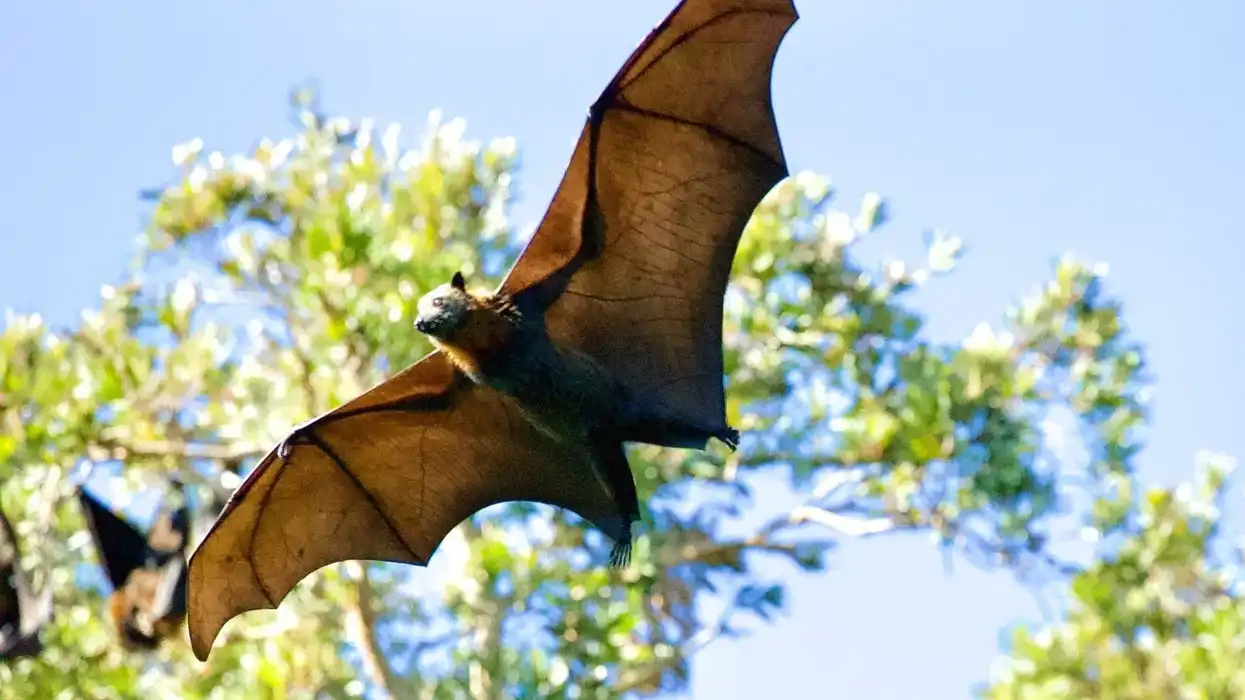Are you interested to know more about various kinds of bats? If yes, then you will like to know the western mastiff bat (Eumops perotis) that is found in different areas of North America, Mexico, and even in South America.
In North America, it's predominantly found in the U.S, like in states of New Mexico, Texas, Arizona, and even California.
It likes arid or semi-arid habitat conditions that are found in desert areas. This bat species also like roost sites that are open and vertically spacious so that it can dive freely while taking a flight.
Leaving aside everything, you are bound to like this bat because of its beautiful fluffy ears and its wrinkly face.
It also has a furry gray-brown body along with distinct long wings which look great along with the protruding snout. Unfortunately, even though this cute bat is commonly found in its natural habitat, several reasons like water shortage and diseases are limiting its population, so the species has been a concern for many wildlife associations.
Want to know more about this bat? Keep reading to find interesting western mastiff bat facts. For more relatable content, check out these Seminole bat facts and northern ghost bat facts for kids.
Western Mastiff Bat Interesting Facts
What type of animal is a western mastiff bat?
The western mastiff bat (Eumops perotis), or the greater mastiff bat is a free-tailed bat species.
What class of animal does the western mastiff bat belong to?
The western mastiff bat belongs to the class Mammalia and to the genus Eumops. This bat also belongs to the family Molossidae just like the Mexican free-tailed bat.
How many western mastiff bats are there in the world?
As a common bat species, no exact species data regarding its population distribution is found. This bat species also has a patchy population distribution making it harder to quantify. However, according to the IUCN, its population seems to be on the decline, especially affecting subspecies like the Eumops perotis californicus.
Where does the western mastiff bat live?
The western or greater mastiff bat hails from the western United States, Mexico, and from South America. Hence, we cannot deem it to be an exclusive North American bat species.
However, interestingly, this bat is regarded as the largest bat of the North American regions, which includes the United States. In the U.S. the species is mainly spotted in the desert and arid areas, which includes states like southern New Mexico, southern Nevada, western Texas, Arizona, and the distribution also stretches to California.
Apart from its population in Central Mexico, the species can be traced to Argentina in Southern America. Colonies of the subspecies E. p. californicus has been found from the southwestern United States till Central Mexico.
What is a western mastiff bat habitat?
The western mastiff bat (Eumops perotis) can live in a variety of habitats, but it prefers extensive open areas with adequate vertical spaces for it to roost and communicate with its fellow bats. Common places of habitat include cliff faces, rock outcroppings, tall buildings, and tunnels.
It has to have a habitat that allows the bat to easily take flight after descending from the roost.
When it comes to the environment of its habitat, this species prefers semi-arid and arid areas. The common habitat choices include conifer or deciduous woodlands, desert scrublands, and grasslands.
Who does western mastiff bat live with?
You will find the western mastiff bat species in the usual roost sites where it forms colonies to congregate for roosting. The colonies usually have about 100 bats and at times males can also be found in maternity colonies.
How long does a western mastiff bat live?
The average lifespan of this bat species is around 10-15 years.
How do they reproduce?
The mating of this bat species usually takes place in the early spring. You can identify the breeding season with the help of enlarged dermal glands found in males.
The secretion of these glands aids the males to attract females. During this season, males also have enlarged and descended testes.
Like other bat species, the greater mastiff bat females are also eutherian and the incubation period lasts for 80-90 days and may extend till July. Usually, one to two pups are born and the young babies are dark black and almost hairless.
The nursery colonies of these bats are filled with young bats of all ages and even males and females stay together. Moreover, the female makes sure to look for a nursery habitat in tight rock crevices to protect the young bats against predators.
What is their conservation status?
According to the International Union for Conservation of Nature (IUCN) Red List, this species is currently classified under the status of Least Concern. However, it should be noted that in many lists of the Bat Conservation International, the Eumops perotis species has been specified to be threatened or endangered.
Western Mastiff Bat Fun Facts
What does the western mastiff bat look like?
Most people are interested in the Eumops perotis bats because of their unique look. However, it's not the only one as it belongs to a family of free-tailed bats in which there are other similar-looking species.
But, this bat can be distinguished because of its gray-brown color along with its long but distinct narrow wings. If you get an opportunity to feel the membrane of its wings you will find it leathery. This bat is covered in short and velvety fur that has whitish roots.
The dorsal side of its body is darker than the pale ventral side. Moreover, as a free-tailed bat species, you will notice that its tail is separate from its body.
It also has special cartilage in the tail that helps it to stretch or contract the organ. You can see its tail as the bird is at the roost.
The most distinct part of the Eumops perotis has to be its large ears that unite at the top of its skull and even extend vertically beyond its snout. Also, do note that both the male and the female have a dermal gland near its throat, but it's much more active in the males.
 *We've been unable to source an image of a western mastiff bat and have used an image of a Mexican free-tailed bat instead. If you are able to provide us with a royalty-free image of a western mastiff bat, we would be happy to credit you. Please contact us at hello@kidadl.com.
*We've been unable to source an image of a western mastiff bat and have used an image of a Mexican free-tailed bat instead. If you are able to provide us with a royalty-free image of a western mastiff bat, we would be happy to credit you. Please contact us at hello@kidadl.com.
How cute are they?
Those who are fond of bats will definitely find this species cute because of its wrinkly face and the enlarged ears.
How do they communicate?
The western mastiff bat sound is through echolocationary squeaks that can travel to a distance of up to 980 ft (298.7 m). This unique way of communication helps the bats to converse with the roost buddies as well as to find their way while foraging at the night.
Moreover, during the breeding season, the male bats also produce an odorous secretion to attract females. We can also assume that these bats also follow tactile forms of communication to get along with its life.
How big is the western mastiff bat?
The average western mastiff bat size range is around 5.5-7.5 in (14-19 cm). It's considered to be the largest bat of the Molossidae family present in North America. Compared to it, the fruit bat usually has a size range of around 5.9-11.8 in (15-30 cm).
How fast can a western mastiff bat move?
We don't have any data about the flight speed of these birds.
How much does a western mastiff bat weigh?
The average weight range of these bats is around 2 oz (57 g).
What are the male and female names of the species?
There are no separate names for the males and females of this species.
What would you call a baby western mastiff bat?
A baby western mastiff bat is called a pup.
What do they eat?
You would be thrilled to know that almost 80% of this bat's diet consists of moths. However, other than that it also eats, caterpillars, ants, bees, crickets, grasshoppers, dragonflies, leaf bugs, beetles, and wasps.
Interestingly, the bat can travel almost 15 mi (24.1 km) away from its roost sites foraging for insects. This bat also happens to have a long foraging period that can last for up to seven hours.
If you notice, these bats mainly catch weak-flying insects or low-flying insects and prefer to forage at a height at the trees.
Also, these bats are likely to catch these insects in flight. However, its diet may also contain insects that aren't able to fly, and it's said that the bats take part in foraging it from the canyon walls.
Are they dangerous?
No, this is quite a cute bat that hunts especially during the night, and it tries to stay away from humans as much as possible. So, it wouldn't be dangerous to you or even your children and pets.
Would they make a good pet?
As it's a wild animal that is protected under wildlife laws, you cannot keep this bat as a pet. Moreover, one of its subspecies, the Eumops perotis californicus gets special attention from the U.S. Fish and Wildlife Service because of its low population.
Did you know...
These bats cannot fly up from the ground, instead, they would scramble up a tree or a post to get into a roosting position before taking a dive to fly. Also, this bat does have the ability to fly for a prolonged period.
Indonesia is considered to be the country with the highest population of bats with 225 species.
Why are they called mastiff bats?
If you are familiar with the dog breed of mastiffs the name of these bats will become more obvious. Similar to the dogs, these bats also have a wrinkly face, so the naming.
However, the mastiff bats are also classified under the bigger family of free-tailed bats. You may also come across the western mastiff bats being called a bonneted bat owing to the bonnet-like large ears present in this species.
Do they feed on blood?
No, unlike the vampire bats, the western mastiff bats don't feed on blood. Instead, this species mostly relies on insects.
Here at Kidadl, we have carefully created lots of interesting family-friendly animal facts for everyone to discover! For more relatable content, check out these goblin bat interesting facts and southern yellow bat fun facts pages.
You can even occupy yourself at home by coloring in one of our free printable tree bat coloring pages.
Second image by USFWS/Ann Froschauer.
*We've been unable to source an image of a western mastiff bat and have used an image of tropical bats instead. If you are able to provide us with a royalty-free image of a western mastiff bat, we would be happy to credit you. Please contact us at hello@kidadl.com.




 *We've been unable to source an image of a western mastiff bat and have used an image of a Mexican free-tailed bat instead. If you are able to provide us with a royalty-free image of a western mastiff bat, we would be happy to credit you. Please contact us at hello@kidadl.com.
*We've been unable to source an image of a western mastiff bat and have used an image of a Mexican free-tailed bat instead. If you are able to provide us with a royalty-free image of a western mastiff bat, we would be happy to credit you. Please contact us at hello@kidadl.com.



